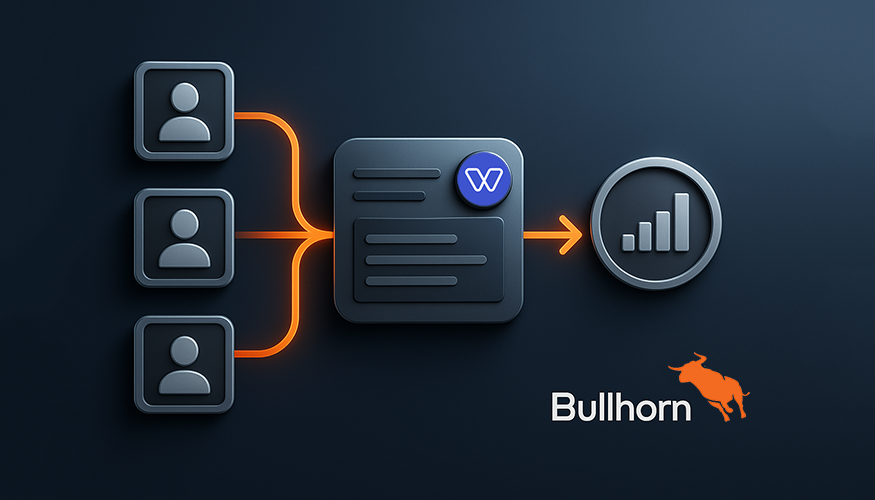Table of Contents
- ROI Snapshot (selected staffing firms using Whippy AI)
- What is recruitment ROI (and why AI changes the math)?
- The recruitment ROI formula
- Benchmarks from real staffing teams (data-driven recruitment)
- Metrics to put on your dashboard (and why)
- Where AI drives the biggest gains
- The business case: from pilot to compounding ROI
- FAQs
- See your numbers in a live walkthrough
- Case studies referenced
Try Whippy for Your Team
Experience how fast, automated communication drives growth.
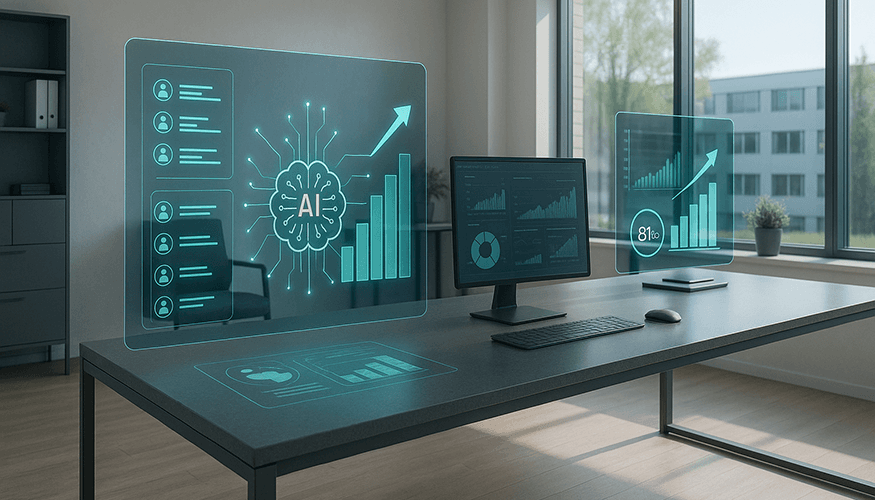
Recruitment ROI is the value you gain from hiring compared to what it costs. To calculate recruitment ROI, track outcomes like faster time-to-hire, cost per hire reduction, and stronger candidate engagement metrics, then compare those gains to total spend (people + media + tools). With AI in recruitment ROI, staffing firms see meaningful recruiting cost savings, faster cycles, and measurable productivity gains in hiring—especially when AI plugs into your ATS, automates first contact, structured screening, scheduling, and follow-ups. Throughout, we reference recruiting ROI benchmarks to ground the math in reality and keep the model defensible for finance.
ROI Snapshot (selected staffing firms using Whippy AI)
What these results actually mean for a staffing P&L: the numbers below translate into fewer manual touches per applicant, lower unit cost per completed screen/interview, and more candidates engaged in less time. For a recruiting team handling high-volume roles, that combination compounds: you move more qualified people through the funnel with the same headcount, and you redeploy saved hours to higher-leverage recruiting efforts (priority reqs, client relationships, redeployments). Treat the numbers below as concise recruiter ROI statistics you can lift into board decks or monthly reviews.
$1.64M/year estimated savings by automating sourcing/screening capacity (≈ 25 recruiters equivalent) with ~96% lower screening/interview costs. (CCS Construction Staffing↗)
Why it matters: this is classic staffing agency ROI—unit economics improve as automation absorbs repetitive work, allowing hiring teams to focus on placements and client delivery.+56% increase in qualified onboardings from job boards and $750/month media savings after automations. (Express Employment — Owner Story↗)
Why it matters: better orchestration raises conversion from existing traffic; you pay less to achieve the same or better throughput—clean recruiting metric improvements for finance.+1200% more Google reviews in <90 days (rating improved 3.4 → 4.7), lifting local reputation and inbound interest. (A+ Staffing↗)
Why it matters: reputation is a lever inside ROI benefits of AI recruiting—automated review asks boost social proof, which lowers future sourcing costs.$90K/year payroll saved, 320 hours/month manual work eliminated, +15% referrals via automated retention/check-ins. (Express Employment — Location↗)
Why it matters: downstream savings (referrals, redeployments) are part of ROI in recruitment, not only initial sourcing.~95% interview cost reduction; ~20× faster to engage; interviews drop from 30–45 min to <5 min with AI recruiters. (Link Staffing↗)
Why it matters: this is the day-one impact of AI on hiring costs—speed and cost per interview move together.12× engagement lift and ~52% faster time-to-fill after consolidating comms and automating sequences. (Lyneer Staffing↗)
Why it matters: throughput improves across the funnel; the recruitment performance metrics that matter to clients (submittals and fills) trend up.
These are AI recruiter ROI examples across industrial, franchise, and high-volume staffing teams. They illustrate the ROI case for AI recruitment software grounded in real operations—not theory.
What is recruitment ROI (and why AI changes the math)?
At its core, return on investment recruitment compares the economic value of outcomes—interviews completed, qualified submissions, placements, client retention—to the fully loaded cost required to produce those outcomes (recruiter time, media, software, and overhead). In traditional models, improvements arrive slowly and depend heavily on manual effort. With AI ROI in staffing, automation shifts the curve on both sides of the equation.
On the outcome side, AI increases the number of candidates engaged and moves them forward faster: instant outreach on apply, structured screening that captures the same fields every time, synchronized reminders that lift show rates, and automatic write-backs that keep the ATS clean. Those improvements show up as higher response rates, more completed interviews per week, better recruiting metrics like submittal-to-hire, and shorter time-to-fill. When a team can run hundreds or thousands of consistent screens in parallel, the ceiling on throughput changes for the entire recruiting team.
On the cost side, AI drives reducing recruitment cost by removing repeated manual steps—first contact, Q&A, basic availability checks, scheduling, and post-interview nudges—especially after hours. That is where the ROI benefits of AI recruiting appear fastest for hiring teams: fewer touches per candidate to reach the same or better outcomes. If your ATS is the system of record, native AI recruiter integrations (e.g., Bullhorn, Avionté Bold) improve ATS integration ROI by eliminating “swivel-chair” work and preventing data loss that inflates downstream rework.
Finally, AI’s structure also supports AI recruiter compliance. Scripts, transcripts, and consent logs make it easier to demonstrate consistent treatment across applicants—a non-trivial component of staffing agency ROI when you consider cost avoidance and process quality over the long term. Where appropriate, you can even factor in ROI of AI interview software—for example, when replacing ad-hoc screening calls with a standardized video interview flow that produces consistent, comparable data for evaluators.
The recruitment ROI formula
Recruitment ROI = (Financial Gains – Total Recruiting Costs) / Total Recruiting Costs
To measure recruitment ROI with AI credibly, define a measurement window (e.g., 30, 60, or 90 days), freeze your assumptions, and compare “before vs. after” on the same role families and markets. Two buckets matter:
1) Financial gains (quantify what moves):
- Cost per hire reduction and recruiting cost savings: If your interview/screening unit cost drops to low single-digit dollars at volume, the savings accumulate quickly. Tie this directly to “interviews completed per week” so finance can see both rate and volume.
- Throughput and revenue timing: Faster placements bring revenue forward. Treat days saved in time-to-fill as a working-capital benefit and, where your model allows, attribute a portion of gross margin to cycle-time improvements.
- Productivity gains in hiring: Convert hours saved to a dollar value using your loaded hourly rate for recruiters and coordinators. This is often the cleanest line item for a CFO.
- Media efficiency: If orchestrated sequences lift apply-to-onboarding conversion, you can spend less for the same output—another clear recruiting metric for your dashboard.
- Reputation effects: Gains in reviews and referrals reduce future acquisition costs. Model these conservatively as a percentage lift on inbound.
2) Total recruiting costs (make them explicit):
- People: recruiter and coordinator time (use your loaded hourly rate).
- Software: AI recruiter platform and any AI recruiting tools used (include ROI of AI interview software if a video interview step is part of your standardized screen).
- Media: job boards, PPC, and other channels.
- Overhead: only if you include it consistently in both periods.
Worked example (illustrative):
If an operation completes ~2,500 interviews per month at ~$2 each (versus a legacy baseline near $40), the AI recruiting cost savings on interviews alone can exceed $75,000/month at scale. If automation trims 320 hours/month, convert that to a dollar value with your own loaded hourly rate (e.g., $30–$45) and record it as metrics for hiring ROI. Even after software, the recruitment business case typically pencils out because you’re stacking recruitment process automation ROI (unit cost down, throughput up) with second-order gains like referrals and review-driven inbound.
How to calculate recruitment ROI in practice:
1. Pick the roles and markets with stable demand and enough volume to be statistically meaningful.
2. Baseline four weekly numbers for 30 days: time-to-contact, interviews completed (and cost per interview), response/show rates, and time-to-fill.
3. Turn on AI for the same scope and measure the same four numbers for the next 30–60 days.
4. Attribute only the deltas tied to the AI-orchestrated steps; keep everything else constant.
5. Present the result as an ROI range with a midpoint, and annotate any outliers (seasonality, unusual client demand).
This approach keeps finance and operations aligned, gives hiring teams a clear playbook, and turns one pilot into the foundation for multi-market rollout.
Benchmarks from real staffing teams (data-driven recruitment)
When staffing firms deploy AI recruiters at scale, the most visible gains show up first in interview cost & speed and then cascade into capacity, time-to-fill, media efficiency, retention, and reputation. Below is how those shifts typically look in a real operation—and how to track them with metrics to measure ROI that finance will trust.
Interview cost & speed
Teams see interview and screening costs fall to low single-digit dollars per completion as AI takes the first pass on outreach and structured Q&A. Meanwhile, time-to-contact compresses—often ~20× faster—because the system follows up instantly and consistently, including after hours. It’s the cleanest demonstration of the impact of AI on hiring costs and a prime lever to reduce time to hire. Pair this with AI recruiter performance metrics (e.g., completion rate, screen score distribution, dropout points) and you get a reliable, repeatable view of throughput quality, not just quantity.
Capacity and automation value
AI can create the equivalent capacity of dozens of recruiters by handling first contact and structured screening at volume. That’s the core ROI of automation in staffing: free your human team to focus on final interviews, client calibration, and closing. In a staffing firm ROI analysis, attribute value to the hours returned to the business (redeployed to higher-leverage work) and the incremental qualified candidates surfaced from the same candidate sources (job boards, direct apply, referrals). If you use custom AI recruiter software, you can adapt scripts and decision trees to your hiring practices, job families, and compliance needs—raising precision while keeping costs predictable.
Hiring KPIs, recruiting KPIs, time-to-fill
Once outreach, screening, and scheduling are AI assisted, response and show rates climb, and time-to-fill typically drops by double-digit percentages (often near ~50% in well-tuned programs). These are high-signal recruitment performance metrics for clients and execs: faster submittals, more consistent quality, and fewer no-shows. Treat them as part of your talent acquisition metrics (to boost ROI) and track by role family and market to isolate what’s working. This is also where you start seeing measurable AI recruiting ROI improvement beyond unit cost.
Media & pipeline efficiency
Conversion lifts (apply → screen → interview) allow you to hold or reduce media spend while maintaining output. That’s proof of better recruiting analytics and smarter orchestration rather than simply “buying more clicks.” Segment by candidate sources to spot waste and reallocate quickly. The result is lower cost per qualified interview and healthier downstream conversion—two line items that strengthen the recruitment business case.
Retention + referrals as ROI
AI-driven check-ins and reminders keep placements warm, improve survey completion, and increase redeployments and referrals. Those gains compound, improving ROI in hiring operations month over month. Attribute a conservative dollar value to each incremental referral or redeployment and include it in your ROI calculation to reflect the full picture—this is part of recruitment system ROI, not an afterthought.
Reputation flywheel
Automated, well-timed review requests lead to more reviews and higher ratings, which improve candidate experiences and bring in more inbound interest at lower acquisition costs. This reputational lift is a credible component of any staffing technology ROI case study and lowers future cost to acquire both candidates and clients.
Metrics to put on your dashboard (and why)
Your dashboard should translate activity into money saved or earned. Start with the core recruitment KPIs and recruiting metrics you already track, then add AI-specific fields so talent acquisition teams and finance can evaluate performance side by side.
- Time-to-contact & time-to-interview: Critical lead indicators of funnel velocity and a direct way to reduce time to hire.
- Completed interviews / month (+ cost per interview): The unit-economics heartbeat of your model; the lower the cost at stable quality, the stronger your AI recruiter software ROI.
- Response rate & show rate (core candidate engagement metrics): Early proof that your sequences resonate and keep candidates engaged.
- Qualified submissions & placements per recruiter: Where “capacity unlocked” turns into revenue; great for a staffing firm ROI analysis.
- Time-to-fill (overall + per segment): Tie days saved to revenue timing and client satisfaction; a top recruiting metric for enterprise buyers.
- Media efficiency (CPC/CPA, conversion to onboarding): Shows whether orchestration—not just spend—drives results.
- Referrals generated & retention check-in completion: Quantify the compounding effect on ROI in recruitment.
- Review volume/ratings & inbound lead velocity: Reputation’s tangible impact on cost-to-acquire.
- Compliance artifacts (transcripts, scripts, consent): Support AI recruiter compliance and audit readiness; reduce rework risk.
- Selection methods ROI (structured vs. unstructured): Compare structured AI screens (including optional video interview steps) against legacy ad-hoc calls to show the ROI of AI interview software and standardized process quality.
- Background checks status & turnaround (where applicable): If your flow triggers background checks, include turnaround speed and pass-through rates—delays here can erode ROI even when the top of the funnel is strong.
These are the recruitment ROI metrics to track weekly. They’re also the right inputs for any recruiting ROI calculator and ongoing recruitment system ROI reviews with finance. For executive rollups, present a monthly one-pager showing: (1) unit cost trend, (2) velocity trend, (3) conversion trend, and (4) quality/compliance trend. That cadence keeps the talent acquisition teams aligned with finance on what’s working—and what to tune next.
Where AI drives the biggest gains
The performance gains come from three things working together: AI recruiting analytics, smart orchestration, and clean system integration.
First, immediate outreach at the exact moment a candidate applies (voice, SMS, email) prevents stalling at the top of the funnel. That speed advantage matters most during nights and weekends. Second, job-specific, structured interviews with automatic write-backs capture the fields hiring teams actually use—availability, desired pay, location—and attach AI recruiter performance metrics (scores, confidence, red flags). That’s data-driven recruitment in practice, not just reporting.
Third, native ATS integrations (e.g., Bullhorn, Avionté Bold) ensure every touch and outcome lands in the system of record, improving dedupe and search, accelerating submission packs, and protecting downstream steps such as scheduling final interviews and kicking off background checks. When the loop is closed in the ATS, custom AI recruiter software can adapt flows by brand, vertical, and client-specific hiring practices without adding swivel-chair work. Taken together, these elements elevate both AI recruiter software ROI and overall recruitment system ROI while continuing to improve candidate experiences through timely, relevant communication.
The business case: from pilot to compounding ROI
A defensible ROI case for AI recruitment software starts small and scales with evidence.
Begin with a single, high-volume role where after-hours drop-off hurts. Freeze your baseline for 30 days and track a concise set of recruitment ROI metrics to track: time-to-contact, cost per interview, response/show rates, and time-to-fill. When you activate AI, keep the role, market, and candidate sources constant so your comparison is clean. After 30–60 days, present a before/after table with deltas and a midpoint ROI calculation. Include qualitative notes on process changes (e.g., adding a structured video interview step) so stakeholders understand not just that results improved, but how.
Next, expand coverage to after-hours engagement and post-placement retention flows, and add a systematic reviews/referrals loop. This is where talent acquisition metrics (to boost ROI) shift from top-funnel improvements to full-funnel durability. Finally, deepen ATS integration and introduce light customization—this is where custom AI recruiter software pays off—so the model reflects your clients’ hiring practices, compliance language, and decision rules. Over time, you’ll see the unit gains from the pilot stack across roles and markets, turning a single win into a rolling staffing ROI program with clear visibility into metrics to measure ROI for both operations and finance.
Following this staged rollout is the most reliable way to maximize recruitment ROI across roles, markets, and quarters.
FAQs
Q: How to calculate recruitment ROI?
A: Use the standard return on investment ROI formula:
(Gains − Costs) ÷ Costs
- Gains (measurable):
- Cost per interview reduction (legacy ≈ $40 → AI ≈ low single digits).
- Reduce time to hire (days saved × avg. gross margin/day).
- Referrals/redeployments attributable to automation.
- Media savings (lower CPA from better conversion).
- Costs (fully loaded): recruiter/coordinator time (loaded hourly per team member), media, software, overhead.
Micro example (ROI calculation):
- 2,000 interviews/month × ($40 − $3) = $74,000 monthly AI recruiting cost savings
- 8 days faster time-to-fill × your average gross margin per day = benefit (e.g., enter GM/day in your model).
Example: 8 days × $900/day (example) = $7,200 benefit.
- Total Gains = $81,200; Total Costs (software + hours) = $12,000
- Recruitment ROI = (81,200 − 12,000) / 12,000 = 5.77×
This is how AI improves recruitment ROI in practice: fewer manual touches, faster cycles, and better conversion—quantified.
Q: What are the best metrics for hiring ROI?
A: Prioritize a short stack that rolls up to dollars (metrics to measure ROI); everything else is diagnostic.
Core (board-level):
- Cost per interview (unit economics of throughput)
- Time-to-fill (by role/market; ties to revenue timing and ROI of recruitment investments)
- Qualified submissions per req (quality + velocity)
Diagnostic (ops-level):
- Time-to-contact, time-to-interview
- Response rate, show rate (keep candidates engaged)
- Media efficiency (CPC/CPA, by candidate sources)
- Referrals / redeployments (often where automation reduces turnover)
- Compliance artifacts (transcripts, consent; supports AI recruiter compliance)
- Selection methods ROI and standardized video interview completion (shows ROI of AI interview software)
Rule of thumb: if a metric doesn’t move cost per interview, time-to-fill, or qualified submittals, treat it as diagnostic, not core.
Q: Where does AI recruitment ROI come from most?
A: From three AI assisted levers that compound:
Top-of-funnel speed: instant outreach + smart reminders → more completed screens.
- Example: +1,200 completed screens/month × ($40 − $3) = savings; also feeds more qualified submittals.
Structured screening + write-backs: consistent data, AI recruiter performance metrics (scores, flags), clean ATS records.
- Outcome: higher shortlist precision, less rework, better hiring practices.
System integration: native ATS syncing cuts admin, accelerates scheduling and background checks, and shortens the path to offer.
Together, these mechanics explain the ROI of AI in hiring and the step-change in staffing automation ROI.
Q: Is AI compliant?
A: AI supports AI recruiter compliance by enforcing consistency and creating auditable records:
- Scripts & standardized prompts (including optional video interview questions)
- Transcripts + explicit consent (timestamped)
- Decision trails (who changed what, when)
- Secure storage aligned to internal policy
These artifacts streamline internal QA, client reviews, and audits. They do not replace legal advice, but they improve evidence quality—a material piece of long-term recruitment system ROI.
See your numbers in a live walkthrough
If you’re evaluating automation or refining your recruitment budget, we’ll help you quantify the results before you commit. In a live walkthrough, our team will build a working ROI model using your real numbers—showing exactly how Whippy’s AI reduces cost per interview, accelerates time-to-hire, and increases recruiter capacity.
You’ll leave with a clear, one-page dashboard for your talent acquisition and finance teams that connects every metric—velocity, unit economics, candidate engagement, and quality—to measurable Recruitment ROI.
Request a Free Demo↗ and see how Whippy makes ROI visible, defensible, and scalable for your staffing firm.
Case studies referenced
- CCS Construction Staffing↗ — $1.64M annual savings; ~96% lower screening/interview costs; ≈25 recruiter capacity.
- Express Employment (Owner Story)↗ — +56% conversions; $750/mo media savings; 1 FTE saved.
- A+ Staffing↗ — +1200% reviews; rating 3.4 → 4.7 in <90 days.
- Express Employment (Location)↗ — $90k/year payroll saved; 320 hours/month; +15% referrals.
- Link Staffing↗ — ~95% interview cost reduction; ~20× faster to engage; <5 minutes to engage; ~2,500+ interviews/month at ~$2/interview.
- Lyneer Staffing↗ — 12× response lift; ~52% faster time-to-fill.
Table of Contents
Table of Contents
- ROI Snapshot (selected staffing firms using Whippy AI)
- What is recruitment ROI (and why AI changes the math)?
- The recruitment ROI formula
- Benchmarks from real staffing teams (data-driven recruitment)
- Metrics to put on your dashboard (and why)
- Where AI drives the biggest gains
- The business case: from pilot to compounding ROI
- FAQs
- See your numbers in a live walkthrough
- Case studies referenced
Try Whippy for Your Team
Experience how fast, automated communication drives growth.
Related Articles
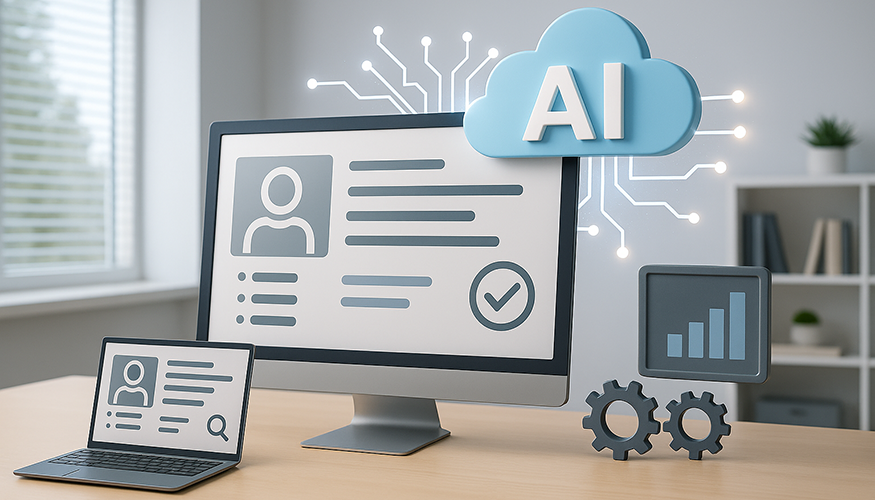
AI Agent for Recruiting: Hire Faster
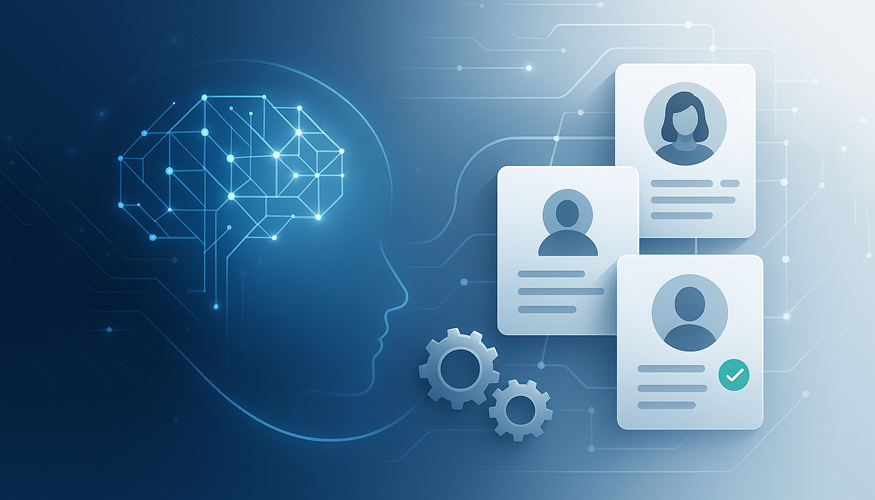
Enterprise Staffing Solutions with AI Automation

AI Recruiting Agents Are the Future of High-Volume Hiring
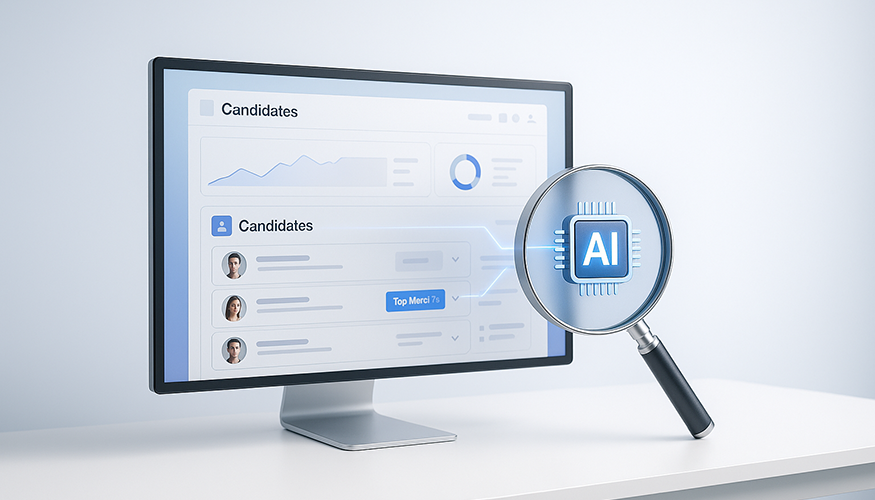
Automate Candidate Screening with AI Tools
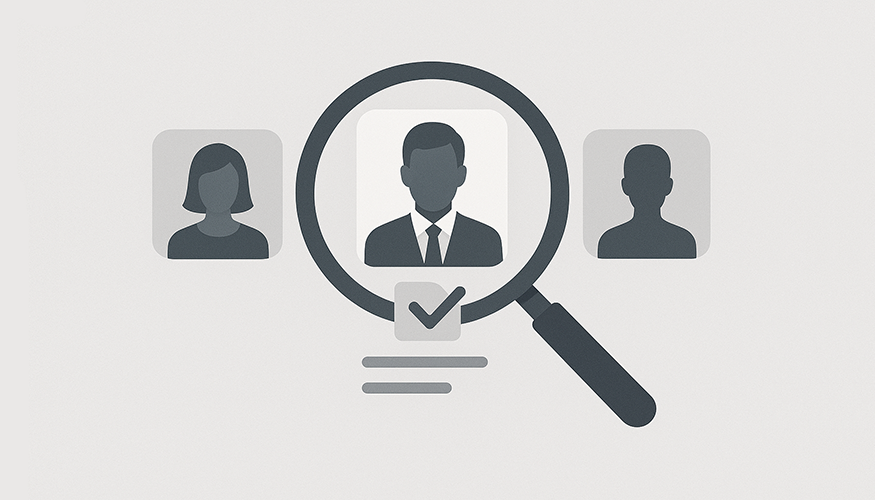
AI Agents in Hiring for ATS Users
